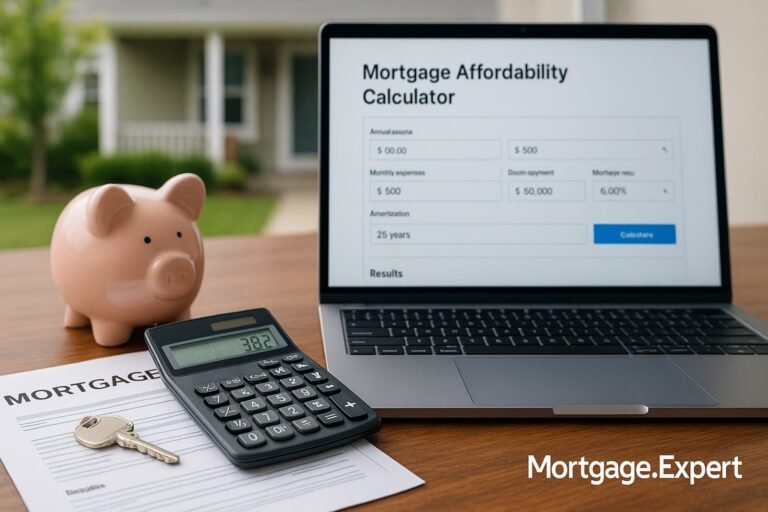
6 Things You Need to Be Preapproved for a Mortgage in Canada
Getting preapproved is a critical first step in your homebuying journey. But what exactly do Canadian lenders look for? Here are the 6 things you’ll need to get preapproved for a mortgage in Canada—plus tips to boost your chances.
Buying a home in Canada can feel like stepping into a whirlwind — open houses, bidding wars, endless listings. But before you get emotionally invested in your dream home, there’s one thing you absolutely need: mortgage preapproval.
Getting preapproved gives you a clear idea of how much a lender is willing to loan you, so you don’t waste time looking at homes outside your price range. It also strengthens your offer when you find the right place — sellers love serious buyers with financing already lined up.
In this guide, we’ll break down what preapproval actually means, how it’s different from prequalification, and the six essential things you need to gather to get preapproved in Canada.
Pre-qualification vs Pre-approval: What’s the Difference?
Let’s clear this up right away because many people confuse the two. Pre-qualification is a soft estimate — based on a quick look at your income, debts, and credit — that gives you a general idea of what you might be able to borrow. It’s fast, free, doesn’t require documents, and won’t impact your credit score. But it’s also not binding.
Preapproval, on the other hand, is a much deeper dive. Your lender looks at your financial documents, credit history, income stability, and more. If everything checks out, they’ll issue a conditional commitment — essentially saying: “We’ll give you X amount at Y interest rate if your final purchase meets our lending guidelines.”
So while pre-qualification is like window shopping, pre-approval is more like having your credit card ready at the checkout counter.
Why Getting Pre-approved Matters
If you’re wondering whether you should bother with pre-approval before starting your home search — the answer is yes. Always yes.
Here’s why:
- You’ll know your true budget and avoid falling for homes you can’t afford.
- You gain more credibility with sellers, especially in hot markets.
- It can lock in your mortgage rate for 90–120 days, shielding you from possible rate hikes.
- It helps your realtor guide you more effectively.
In short, pre-approval gives you clarity, confidence, and leverage.
What You Need to Get Preapproved for a Mortgage
Every lender is a bit different, but most will ask for the same six core items when you apply for mortgage preapproval in Canada:
1. Valid Government-Issued ID
Yes, this might sound obvious, but verifying your identity is the first step. Your lender needs to know you’re you — and not someone pretending to be you.
You’ll need a government-issued photo ID like a passport, driver’s license, or PR card if you’re a newcomer to Canada. The ID must show your full name, date of birth, and address.
📋 Checklist: Documents for Mortgage Preapproval in Canada
Getting preapproved? Make sure you have the following documents ready to speed up the process with your lender or broker.
- ✅ Proof of Identity – Government-issued photo ID (driver’s licence, passport)
- ✅ Proof of Income – Recent pay stubs, T4s, or Notice of Assessment (if self-employed)
- ✅ Employment Verification – Letter of employment or job offer with salary details
- ✅ Credit Report – Most lenders will check this themselves, but some may ask if recent
- ✅ Bank Statements – Last 3 months of your main chequing/savings account
- ✅ List of Debts – Credit cards, car loans, student loans with monthly payments
- ✅ Down Payment Proof – Bank savings, RRSP, or gift letter (if applicable)
- ✅ Proof of Assets – Vehicle ownership, investments, other real estate
🔍 Tip: Some lenders may also request divorce settlements, child support docs, or rental income details—depending on your situation.
2. Proof of Income
Your lender wants to be sure you can actually afford to repay the loan — and that means confirming your income.
If you’re a salaried employee, this usually includes:
- Recent pay stubs
- T4 slips for the past 1–2 years
- A letter of employment stating your role, salary, and how long you’ve been with the company
If you’re self-employed, expect to submit:
- Two years of Notice of Assessment (NOA) from the CRA
- Business financials, such as profit and loss statements
- In some cases, bank statements showing consistent income
Proving steady income is one of the trickiest parts for freelancers and business owners — so prep early if you’re in that boat.
3. Employment Verification
Your job status matters. Lenders need reassurance that your income won’t vanish tomorrow.
Along with pay stubs or NOAs, you’ll often be asked for a letter of employment. It should confirm:
- Your job title
- Type of employment (full-time, part-time, contract)
- Length of time at the company
- Salary (hourly or annual)
If you’re newly employed or recently changed jobs, your lender may want extra documentation or probation details.
4. Credit Score and Report
Your credit score plays a major role in how much you can borrow and what rate you’ll get.
- A score of 680+ is usually considered ideal.
- Scores 600–679 may still qualify you but with stricter conditions or higher rates.
- Scores under 600 may limit your lender options or require a co-signer.
Lenders check your credit history, repayment patterns, and total debt. If you’ve had missed payments, bankruptcies, or high credit utilization, it can hurt your chances.
💡 Tip: Get a free copy of your credit report from Equifax or TransUnion and fix any errors before applying.
5. Proof of Assets
Lenders want to see that you have some financial cushion and that you’re not scraping together your down payment from unknown sources.
They’ll ask for:
- Bank statements (savings, chequing, RRSPs, TFSAs)
- Investment statements
- Proof of gifted down payments (if a family member is helping you — more on this below)
- Details on other real estate or vehicles owned
The goal? To show that you have enough liquidity and aren’t over-leveraged.
6. Down Payment Details
How much you plan to put down — and where that money is coming from — is a critical part of the preapproval process.
In Canada, you need:
- At least 5% down for homes under $500,000
- 10% down for the portion between $500,000 and $999,999
- 20% down for homes $1 million+
You’ll be asked to prove the source of this down payment:
- Personal savings (with bank statements showing a 90-day history)
- Gifted funds (with a signed gift letter from the donor)
- RRSP withdrawals via the Home Buyers’ Plan
📌 Minimum Down Payments in Canada (2025)
Here’s how much you need to put down when buying a home in Canada, depending on the purchase price:
➤ Minimum down payment: 5%
➤ Minimum down payment: 5% on first $500K + 10% on the remaining amount
➤ Minimum down payment: 20%
⚠️ CMHC-insured mortgages not available
💡 Tip: First-time home buyers may be eligible for down payment support through RRSP withdrawals (Home Buyers’ Plan) or FHSA.
Final Thoughts: Pre-approval Isn’t Optional — It’s Essential
Getting pre-approved is more than just a box to check off. It’s your entry ticket to the housing market, especially in a competitive environment.
It shows sellers you’re serious, gives you a realistic picture of what you can afford, and can lock in your rate — all before you start shopping.
So gather your documents, check your credit, and speak to a trusted mortgage broker or lender to get the process rolling.
Because the sooner you’re preapproved, the sooner you’ll be holding the keys to your new home.
📋 Want to Get Preapproved With Confidence?
Not sure what documents or scores you need? Our mortgage experts will walk you through every requirement—so you can house hunt with peace of mind.
Talk to a Mortgage ExpertStuck with a Mortgage Decision?
Don’t stress — our team is here to help. Reach out for free, no-obligation guidance.
Contact the Experts



